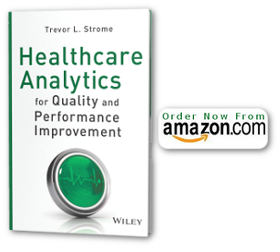Summit overview
As mentioned in a previous blog post, I recently attended the Institute for Health Technology Transformation (IHT2) Health IT Summit in Denver, Colorado (held July 26 & 27, 2011. During the conference, I had the opportunity to moderate two panel discussions (one focusing on healthcare analytics, the other on bringing the seemingly disconnected elements of Health IT together to improve healthcare operations, quality, and patient safety).
The summit brought together healthcare leaders from around the Denver area, and indeed from across the United States. The participants displayed an incredible depth and breadth of experience and knowledge in the field of Health Information Technology (HIT). Overall, the conference provided an excellent opportunity to share ideas, opinions, and lessons learned with a diversity of experts in Health IT. The theme of the summit was, “Meaningful Use, Electronic Health Records and Analytics“, but information security and privacy also surfaced as top concerns.
Meaningful Use – And Beyond
There was a recognition that Meaningful Use (MU) is more than an incentive to adopt electronic medical record systems, or at least it should be seen as such. Although the potential financial payoff of meeting MU requirements can be significant, the longer-term implications on quality and patient safety could be even more significant. There was agreement that healthcare organizations (HCOs) need to be looking beyond merely meeting short-term MU implementation requirements, and plan for changes in process (clinical, operational, etc) that can truly transform healthcare delivery. With the power that HIT can put into the hands of clinical providers, there is a real opportunity to revolutionize physician-patient interactions and information sharing so that physicians can become better physicians, and patients can become better patients. Effective use of technology is one of the key ways that healthcare organizations can become competitive, and in fact, disrupt the status quo with innovation and a willingness to do things differently.
One of the HIT innovations that the Denver Summit participants discussed include Computerized Provider Order Entry, or CPOE. CPOE has the potential to improve patient safety by checking for correct dosing, reducing transcription errors, and providing real-time alerts when something is wrong. Mobile computing will be another innovation that will help transform healthcare, bringing all the power of computerized health records and best-evidence to the bedside on truly hand-held units.
Healthcare analytics trends – predictive analytics, and analytics by the bedside
Not surprisingly, the topic of healthcare analytics surfaced frequently (even in those sessions not focusing on that topic). This is because analytics is seen, in many ways, as the common link that can bring the various HIT systems and data sources together to make sense of, and ultimately improve, how patients are cared for (and how patients care for themselves). Although much analytics development work has been done on the financial side of healthcare operations, there was strong consensus that the use of analytics on clinical data for improving quality and patient safety is just scratching the surface. Furthermore, analytics must become more than a retrospective reporting tool.
Panelists believed that two key trends in healthcare analytics would be predictive analytics, and analytics by the bedside. Predictive analytics will help healthcare organizations better anticipate demand for services, identify particular risks and/or needs for individual patients, and help develop improved workflows and processes to improve efficiency. Taking that one step further, panelists believed that embedded analytics in clinical applications by the bedside (on mobile devices) will help close the loop and enable physicians to make even more informed patient care decisions based on both immediate and predicted future needs (and behavior) of the patient.
Keeping IT secure
These advanced HIT applications require a lot of data to be shared between computer systems, and ultimately, people. Furthermore, most of this information is what people would consider to be their most “sensitive” information. There is a responsibility among users and stewards of healthcare data to ensure that the data is kept private . This means that information is not inadvertently shared with, leaked to, or hacked into by, people that do not have a legitimate need to access it.
Of course, electronic data can be made almost entirely secure; the trade-off though is that nobody would be able to access it. An ongoing discussion between healthcare providers, researchers, administrators, and information stewards needs to continue so that appropriate levels of privacy and security can be maintained. This is so that information that needs to be shared can be shared, without risking wide-scale leaks.
Summary
Panelists and summit attendees agreed that health IT is still in its early days, but that there is enormous potential to transform healthcare with the help of thoughtful, coordinated, and timely implementation of effective healthcare technology. The Institute for Health Technology Transformation (IHT2) does a great job of bringing experts from many HIT fields together to discuss the most pressing issues facing healthcare, and how HIT can help address those issues. And, more importantly, the IHT2 and summit attendees never loose sight on the fact that as stakeholders in the healthcare system, we must always focus on our ultimate goal – to improve patient care.

{ 0 comments… add one now }